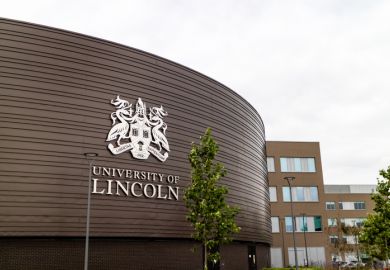Universities must still provide £150 million to support poor undergraduates despite the government scrapping its match-funded National Scholarship Programme in last week’s spending round, the director of fair access has warned.
The 2015-16 spending round, announced on 26 June, again protected the research budget in cash terms, which will be frozen at £4.6 billion.
But protection for research meant reductions elsewhere in the Department for Business, Innovation and Skills, with several cuts to financial support targeting the most disadvantaged students.
As well as scrapping the £150 million NSP for undergraduates, student maintenance grants were frozen.
And “student opportunity” funding attached to the poorest undergraduates to promote widening participation and retention could come under increasing pressure as the teaching grant is cut by “at least” £45 million.
The NSP – criticised for focusing too much on Exchequer-friendly fee waivers at the expense of bursaries – was ditched for undergraduates and will be relaunched as a £50 million fund for postgraduates from 2015-16.
Despite previously championing the NSP as a way to soften the blow of the new tuition fees regime on the poorest students, the Liberal Democrats chose not to defend it in spending round talks.
However, universities had committed to spending £150 million of their own money in the NSP – and will not be let off the hook.
Les Ebdon, director of the Office for Fair Access, said: “The £150 million of matched funding from universities is part of their access agreements and therefore is not affected by the refocusing of the NSP.
“We expect it to be used in its broadest sense to promote better access, widen participation and secure student success.”
While the Treasury’s spending round document gives a headline figure of £600 million in BIS cuts, the reductions cited in the text total £730 million.
And a spokeswoman for BIS said there would be additional “savings from across the department”, meaning that the final reduction may be more than the 6 per cent cited by George Osborne, the chancellor, in his speech announcing the spending review.
The cut to the teaching grant – which will be allocated by England’s funding council – will set in motion a battle between research-intensive and new universities.
While the former will defend cash for high-cost subjects, the latter will strive to protect student opportunity funding.
The higher education cuts featured at a press briefing on the spending round by the Institute for Fiscal Studies on June.
Luke Sibieta, senior research economist at the IFS, said that by 2015-16 the eligibility threshold for full maintenance grants will have been frozen at a household income of £25,000 for seven years, amounting to a 20 per cent cut given cumulative inflation.
“It would seem desirable to have a consistent policy of uprating that is maintained year on year, rather than cash freezes on an ad hoc basis,” the economist added.
Mr Sibieta said that the IFS had found the NSP to be “a fairly poorly designed system” that was “unlikely to have much effect on participation”.
Meanwhile, in a speech on June, Danny Alexander, the chief secretary to the Treasury, announced that the government planned to raise £10 billion from the sale of pre-2012 income-contingent student loans.
The Treasury said the move was aimed at reducing public sector net debt, to which student loans contribute.
Register to continue
Why register?
- Registration is free and only takes a moment
- Once registered, you can read 3 articles a month
- Sign up for our newsletter
Subscribe
Or subscribe for unlimited access to:
- Unlimited access to news, views, insights & reviews
- Digital editions
- Digital access to THE’s university and college rankings analysis
Already registered or a current subscriber? Login




